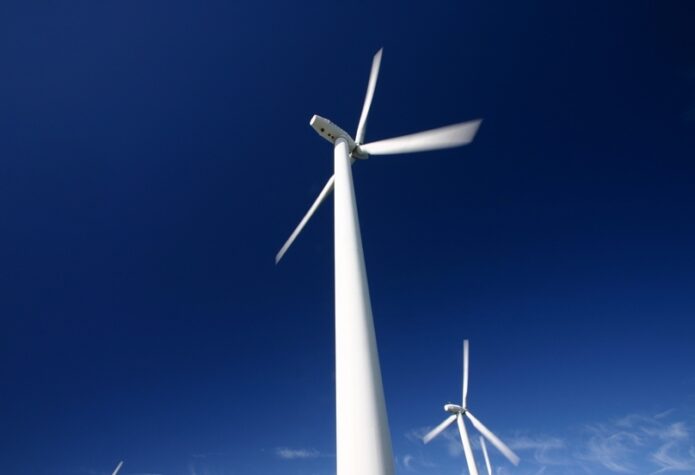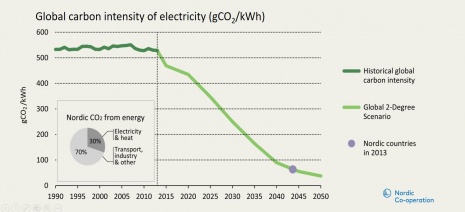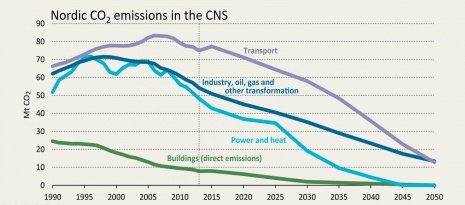Renewables: More for less

The costs of renewable energy in the world are lower than ever, and 2016 saw a record amount of new capacity installed. These are the findings of recently published reports on global renewable energy progress. This is very promising for the green transition we are facing, says Svend Søyland, a Nordic energy expert, in an interview with the NIB Newsletter.
The “Global Trends in Renewable Energy Investment” report by the UN Environment (UNEP) has analysed data on investors, projects and transactions in renewables excluding large hydro-electric projects. According to this report, the proportion of global electricity coming from these renewable sources rose to 11.3% in 2016, one percentage point up from 2015. According to the report, this helped prevent the emissions of an estimated 1.7 gigatonnes of CO2.
A record 138.5 GW of new capacity was installed in 2016, which is 9% up on 2015. This growth in capacity was achieved at markedly lower costs as the global new investment in renewables shrunk by as much as 23% to USD 241.6 billion. In 2016, the investment figure in renewables was still roughly double that of fossil fuel generation, for the fifth successive year.
Wind and solar energy are becoming increasingly inexpensive. In just one year, the price of generation solar photovoltaics has fallen 17%, while the price of onshore and offshore wind has fallen 18% and 28% respectively.
The International Energy Agency’s “World Energy Investment” report confirms that 2016 saw a significant drop in capital spending on fossil fuels. For the first time ever, low-carbon components including electricity networks took over as the largest recipient of energy investment.
“The growing capacity and falling costs mean that the overall volume is much greater than anticipated. This is very promising for the green transition we are facing. We are also witnessing a faster policy take-up than expected—I am referring to the targets set in the 2015 Paris Agreement and national commitments in terms of the decarbonisation of the economy”, says Svend Søyland, Senior Advisor at Nordic Energy Research, an Oslo-based energy research funding agency under the auspices of the Nordic Council of Ministers.
“This is a positive development. We should not, however, forget the factors that inhibit the continuous growth of renewable investments. Those are, among other things, fossil-fuel subsidies both on production and consumption as well as the reluctance of the institutional investors to embrace renewable infrastructure investment.”
According to a report recently published by the Institute for Energy Economics and Financial Analysis (IEEFA), the Norwegian Government Pension Fund (NBIM), or the so-called “oil fund”, may be exposed to financial risk due to its significant oil stock holdings in the wake of a worldwide downturn across the oil sector. The report recommends the fund allocate USD 25 billion to a renewable energy portfolio. The report notes also that numerous large institutional investors have made similar moves already.
Nordics ahead in renewables
The Nordic countries are at the forefront of green solutions and have set ambitious targets for decarbonisation. Earlier this year, the Nordic ministers of the environment adopted a joint climate declaration expressing their support for climate research and evidence-based legislation.
“The Nordics are faring better than any other region. We have already achieved the targets for renewables in the electricity mix that the rest of the world is supposed to meet by 2043. But we have our own challenges to be addressed—for instance, a large volume of energy-intense industries and a considerable amount of emissions from transport”, Mr Søyland continues.
Thirty years ahead on electricity decarbonisation

Source: Nordic Energy Research
In a recent report commissioned by the Nordic Council of Ministers, former Nokia CEO Jorma Ollila gave his recommendations on how the Nordics can support green transition. Mr Ollila argues that Nordic countries must carefully consider avenues for cooperation between themselves and with the Baltics in order to maintain the region’s global competitiveness in the green energy sector.
Mr Ollila suggests that in particular the transport sector, which currently accounts for around 40% of Nordic emissions, would benefit from increased Nordic cooperation. The report also suggests further strengthening the Nordic grid network and market in order to take advantage of increasing volumes of renewable energy sources, like wind and solar.
Emission trajectory for sectors to meet the Noridc Carbon Neutral Scenario (CNS)

Source: Nordic Energy Research
“We are very encouraged by these recommendations on working together in research and the development of technologies. If we stand together, we can do much better in the future, competing with other very strong global players in the areas of renewable energy storage, batteries, electric transport, etc. Working together we’ll be able to create a bigger home market. For instance, the Nordic countries could agree on giving incentives for batteries, a charging infrastructure, and working together in bidding for research in the EU”, says Mr Søyland.
Jorman Ollila: Nordics stand to gain hugely on closer energy cooperation

Svend Søyland
Senior advisor at Nordic Energy Research
NER is an energy research funding agency under the auspices of the Nordic Council of Ministers.
Photo: Nordic Energy Research